Héctor Delgado
On Deepfake Voice Detection -- It's All in the Presentation
Sep 30, 2025Abstract:While the technologies empowering malicious audio deepfakes have dramatically evolved in recent years due to generative AI advances, the same cannot be said of global research into spoofing (deepfake) countermeasures. This paper highlights how current deepfake datasets and research methodologies led to systems that failed to generalize to real world application. The main reason is due to the difference between raw deepfake audio, and deepfake audio that has been presented through a communication channel, e.g. by phone. We propose a new framework for data creation and research methodology, allowing for the development of spoofing countermeasures that would be more effective in real-world scenarios. By following the guidelines outlined here we improved deepfake detection accuracy by 39% in more robust and realistic lab setups, and by 57% on a real-world benchmark. We also demonstrate how improvement in datasets would have a bigger impact on deepfake detection accuracy than the choice of larger SOTA models would over smaller models; that is, it would be more important for the scientific community to make greater investment on comprehensive data collection programs than to simply train larger models with higher computational demands.
ASVspoof 5: Design, Collection and Validation of Resources for Spoofing, Deepfake, and Adversarial Attack Detection Using Crowdsourced Speech
Feb 13, 2025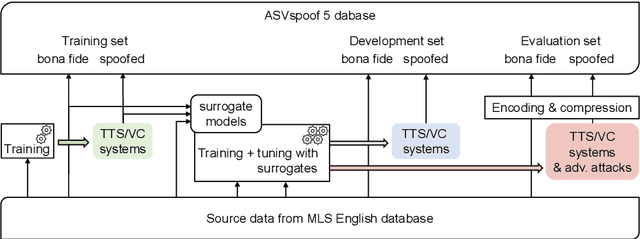

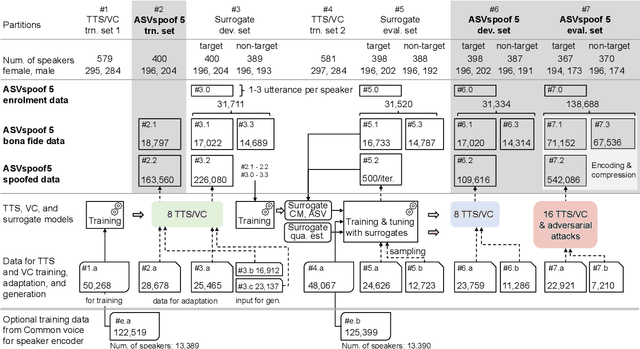
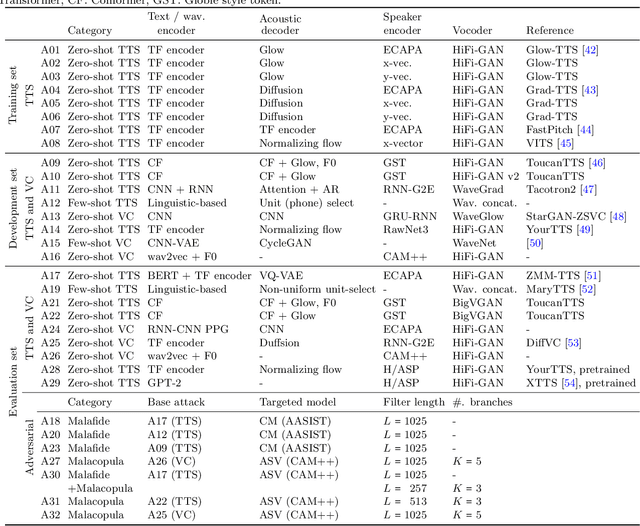
Abstract:ASVspoof 5 is the fifth edition in a series of challenges which promote the study of speech spoofing and deepfake attacks as well as the design of detection solutions. We introduce the ASVspoof 5 database which is generated in crowdsourced fashion from data collected in diverse acoustic conditions (cf. studio-quality data for earlier ASVspoof databases) and from ~2,000 speakers (cf. ~100 earlier). The database contains attacks generated with 32 different algorithms, also crowdsourced, and optimised to varying degrees using new surrogate detection models. Among them are attacks generated with a mix of legacy and contemporary text-to-speech synthesis and voice conversion models, in addition to adversarial attacks which are incorporated for the first time. ASVspoof 5 protocols comprise seven speaker-disjoint partitions. They include two distinct partitions for the training of different sets of attack models, two more for the development and evaluation of surrogate detection models, and then three additional partitions which comprise the ASVspoof 5 training, development and evaluation sets. An auxiliary set of data collected from an additional 30k speakers can also be used to train speaker encoders for the implementation of attack algorithms. Also described herein is an experimental validation of the new ASVspoof 5 database using a set of automatic speaker verification and spoof/deepfake baseline detectors. With the exception of protocols and tools for the generation of spoofed/deepfake speech, the resources described in this paper, already used by participants of the ASVspoof 5 challenge in 2024, are now all freely available to the community.
Malacopula: adversarial automatic speaker verification attacks using a neural-based generalised Hammerstein model
Aug 17, 2024Abstract:We present Malacopula, a neural-based generalised Hammerstein model designed to introduce adversarial perturbations to spoofed speech utterances so that they better deceive automatic speaker verification (ASV) systems. Using non-linear processes to modify speech utterances, Malacopula enhances the effectiveness of spoofing attacks. The model comprises parallel branches of polynomial functions followed by linear time-invariant filters. The adversarial optimisation procedure acts to minimise the cosine distance between speaker embeddings extracted from spoofed and bona fide utterances. Experiments, performed using three recent ASV systems and the ASVspoof 2019 dataset, show that Malacopula increases vulnerabilities by a substantial margin. However, speech quality is reduced and attacks can be detected effectively under controlled conditions. The findings emphasise the need to identify new vulnerabilities and design defences to protect ASV systems from adversarial attacks in the wild.
ASVspoof 2021: Towards Spoofed and Deepfake Speech Detection in the Wild
Oct 05, 2022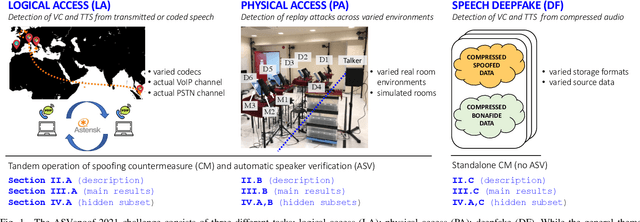
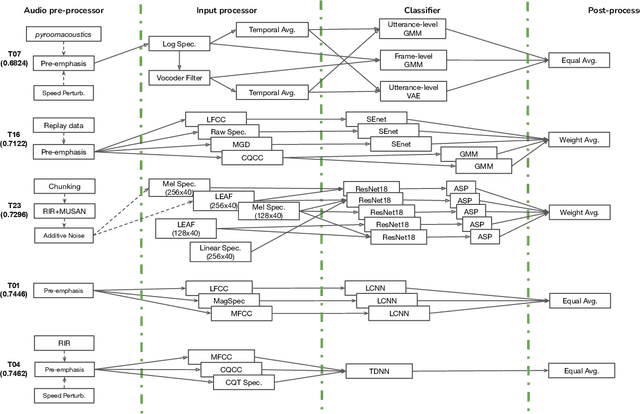
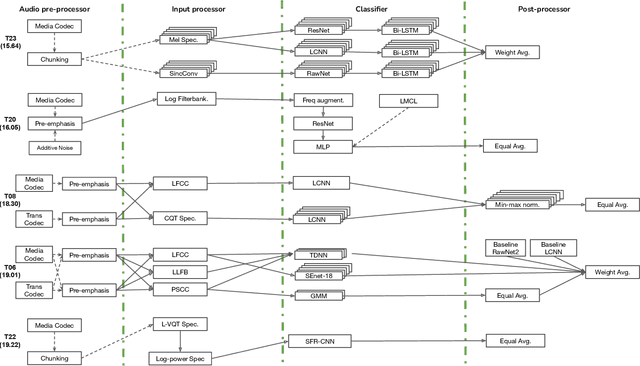

Abstract:Benchmarking initiatives support the meaningful comparison of competing solutions to prominent problems in speech and language processing. Successive benchmarking evaluations typically reflect a progressive evolution from ideal lab conditions towards to those encountered in the wild. ASVspoof, the spoofing and deepfake detection initiative and challenge series, has followed the same trend. This article provides a summary of the ASVspoof 2021 challenge and the results of 37 participating teams. For the logical access task, results indicate that countermeasures solutions are robust to newly introduced encoding and transmission effects. Results for the physical access task indicate the potential to detect replay attacks in real, as opposed to simulated physical spaces, but a lack of robustness to variations between simulated and real acoustic environments. The DF task, new to the 2021 edition, targets solutions to the detection of manipulated, compressed speech data posted online. While detection solutions offer some resilience to compression effects, they lack generalization across different source datasets. In addition to a summary of the top-performing systems for each task, new analyses of influential data factors and results for hidden data subsets, the article includes a review of post-challenge results, an outline of the principal challenge limitations and a road-map for the future of ASVspoof. Link to the ASVspoof challenge and related resources: https://www.asvspoof.org/index2021.html
Baseline Systems for the First Spoofing-Aware Speaker Verification Challenge: Score and Embedding Fusion
Apr 21, 2022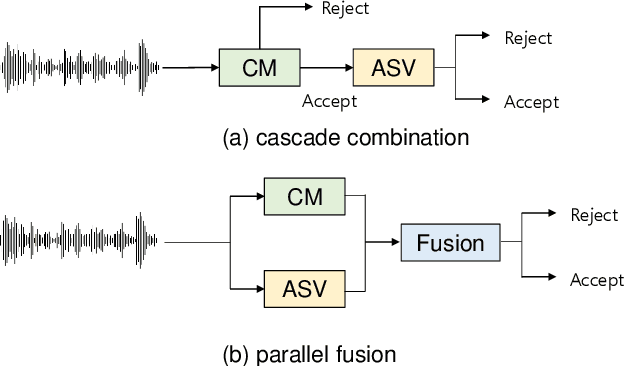

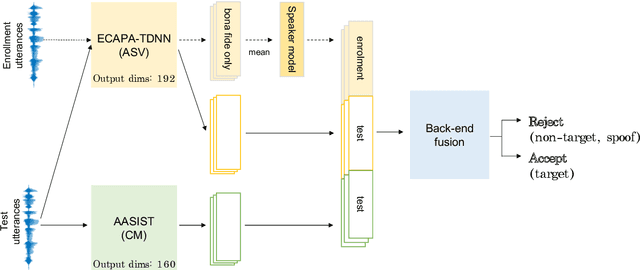

Abstract:Deep learning has brought impressive progress in the study of both automatic speaker verification (ASV) and spoofing countermeasures (CM). Although solutions are mutually dependent, they have typically evolved as standalone sub-systems whereby CM solutions are usually designed for a fixed ASV system. The work reported in this paper aims to gauge the improvements in reliability that can be gained from their closer integration. Results derived using the popular ASVspoof2019 dataset indicate that the equal error rate (EER) of a state-of-the-art ASV system degrades from 1.63% to 23.83% when the evaluation protocol is extended with spoofed trials.%subjected to spoofing attacks. However, even the straightforward integration of ASV and CM systems in the form of score-sum and deep neural network-based fusion strategies reduce the EER to 1.71% and 6.37%, respectively. The new Spoofing-Aware Speaker Verification (SASV) challenge has been formed to encourage greater attention to the integration of ASV and CM systems as well as to provide a means to benchmark different solutions.
ASVspoof 2021: accelerating progress in spoofed and deepfake speech detection
Sep 01, 2021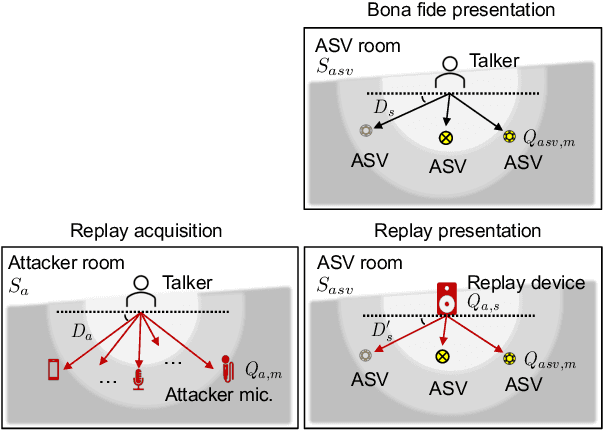
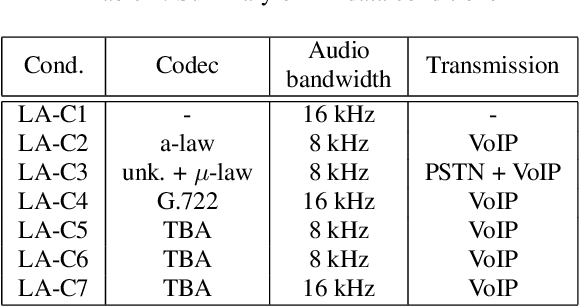
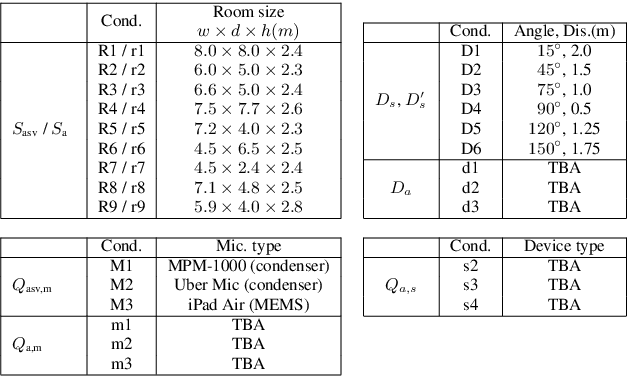
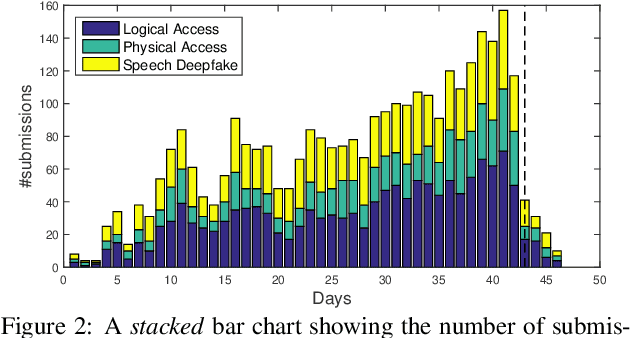
Abstract:ASVspoof 2021 is the forth edition in the series of bi-annual challenges which aim to promote the study of spoofing and the design of countermeasures to protect automatic speaker verification systems from manipulation. In addition to a continued focus upon logical and physical access tasks in which there are a number of advances compared to previous editions, ASVspoof 2021 introduces a new task involving deepfake speech detection. This paper describes all three tasks, the new databases for each of them, the evaluation metrics, four challenge baselines, the evaluation platform and a summary of challenge results. Despite the introduction of channel and compression variability which compound the difficulty, results for the logical access and deepfake tasks are close to those from previous ASVspoof editions. Results for the physical access task show the difficulty in detecting attacks in real, variable physical spaces. With ASVspoof 2021 being the first edition for which participants were not provided with any matched training or development data and with this reflecting real conditions in which the nature of spoofed and deepfake speech can never be predicated with confidence, the results are extremely encouraging and demonstrate the substantial progress made in the field in recent years.
ASVspoof 2021: Automatic Speaker Verification Spoofing and Countermeasures Challenge Evaluation Plan
Sep 01, 2021
Abstract:The automatic speaker verification spoofing and countermeasures (ASVspoof) challenge series is a community-led initiative which aims to promote the consideration of spoofing and the development of countermeasures. ASVspoof 2021 is the 4th in a series of bi-annual, competitive challenges where the goal is to develop countermeasures capable of discriminating between bona fide and spoofed or deepfake speech. This document provides a technical description of the ASVspoof 2021 challenge, including details of training, development and evaluation data, metrics, baselines, evaluation rules, submission procedures and the schedule.
Visualizing Classifier Adjacency Relations: A Case Study in Speaker Verification and Voice Anti-Spoofing
Jun 11, 2021
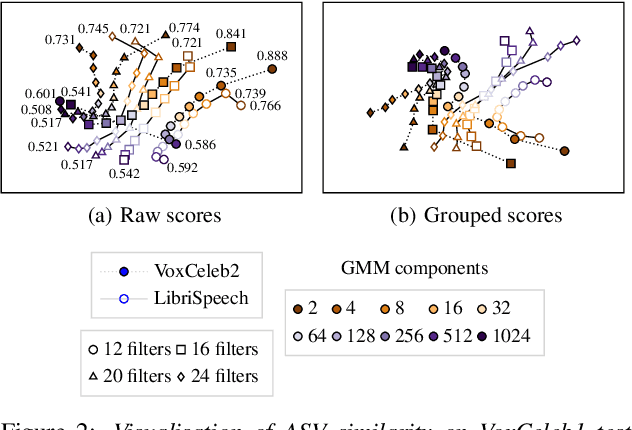
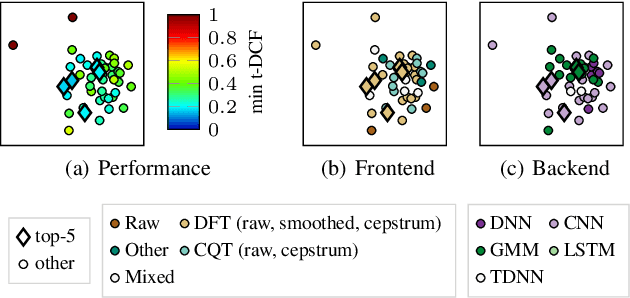
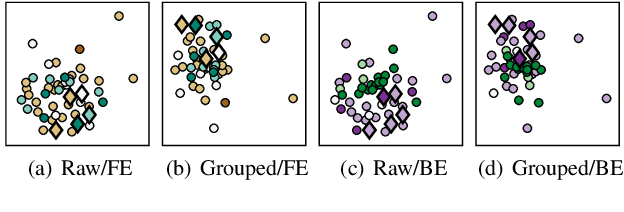
Abstract:Whether it be for results summarization, or the analysis of classifier fusion, some means to compare different classifiers can often provide illuminating insight into their behaviour, (dis)similarity or complementarity. We propose a simple method to derive 2D representation from detection scores produced by an arbitrary set of binary classifiers in response to a common dataset. Based upon rank correlations, our method facilitates a visual comparison of classifiers with arbitrary scores and with close relation to receiver operating characteristic (ROC) and detection error trade-off (DET) analyses. While the approach is fully versatile and can be applied to any detection task, we demonstrate the method using scores produced by automatic speaker verification and voice anti-spoofing systems. The former are produced by a Gaussian mixture model system trained with VoxCeleb data whereas the latter stem from submissions to the ASVspoof 2019 challenge.
ASVspoof 2019: spoofing countermeasures for the detection of synthesized, converted and replayed speech
Feb 11, 2021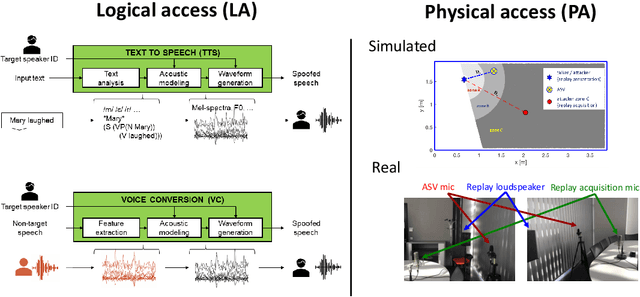
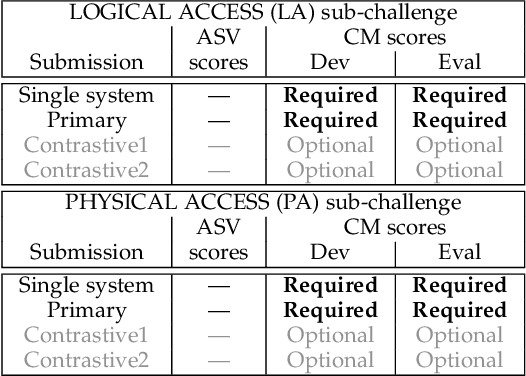
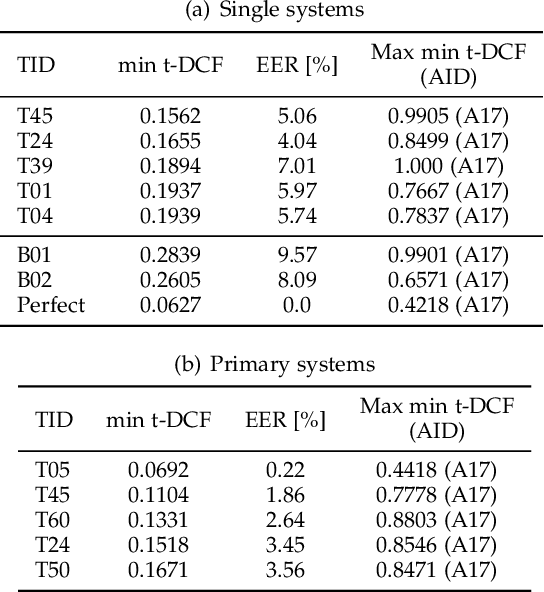
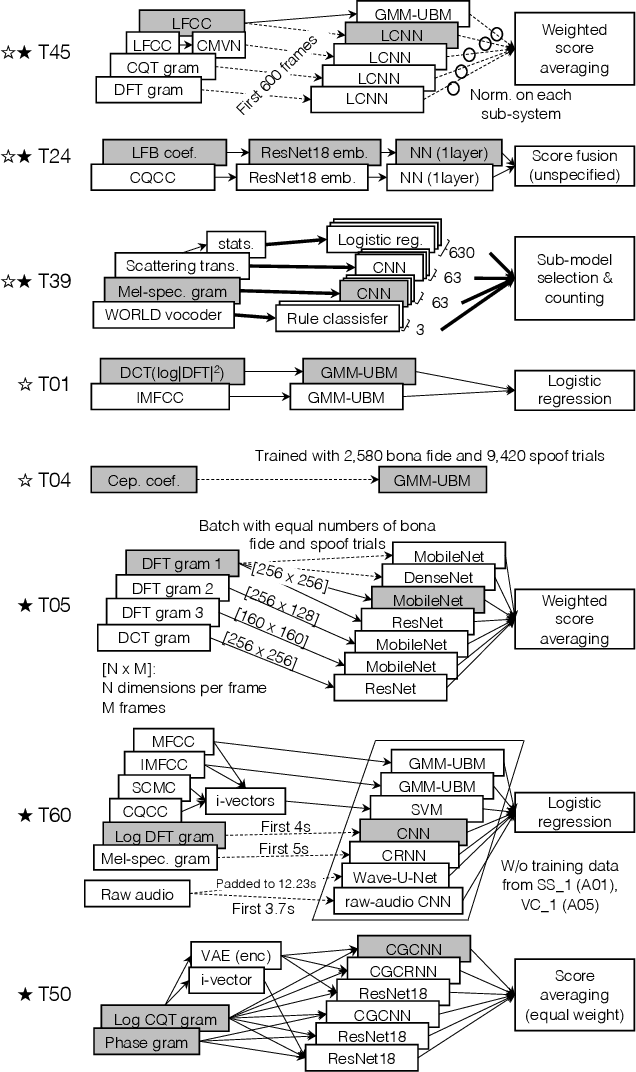
Abstract:The ASVspoof initiative was conceived to spearhead research in anti-spoofing for automatic speaker verification (ASV). This paper describes the third in a series of bi-annual challenges: ASVspoof 2019. With the challenge database and protocols being described elsewhere, the focus of this paper is on results and the top performing single and ensemble system submissions from 62 teams, all of which out-perform the two baseline systems, often by a substantial margin. Deeper analyses shows that performance is dominated by specific conditions involving either specific spoofing attacks or specific acoustic environments. While fusion is shown to be particularly effective for the logical access scenario involving speech synthesis and voice conversion attacks, participants largely struggled to apply fusion successfully for the physical access scenario involving simulated replay attacks. This is likely the result of a lack of system complementarity, while oracle fusion experiments show clear potential to improve performance. Furthermore, while results for simulated data are promising, experiments with real replay data show a substantial gap, most likely due to the presence of additive noise in the latter. This finding, among others, leads to a number of ideas for further research and directions for future editions of the ASVspoof challenge.
Tandem Assessment of Spoofing Countermeasures and Automatic Speaker Verification: Fundamentals
Jul 12, 2020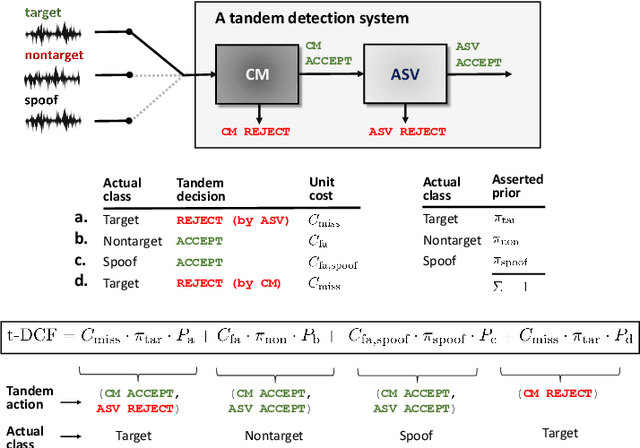

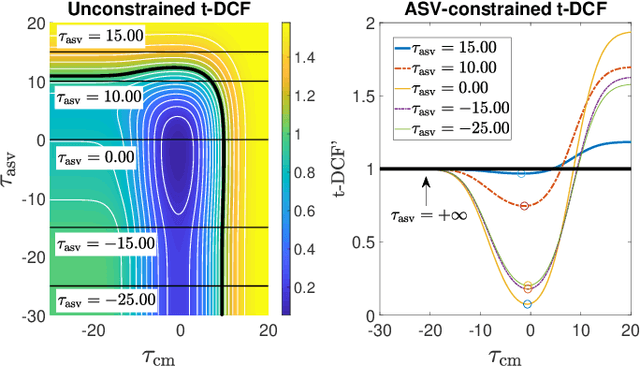

Abstract:Recent years have seen growing efforts to develop spoofing countermeasures (CMs) to protect automatic speaker verification (ASV) systems from being deceived by manipulated or artificial inputs. The reliability of spoofing CMs is typically gauged using the equal error rate (EER) metric. The primitive EER fails to reflect application requirements and the impact of spoofing and CMs upon ASV and its use as a primary metric in traditional ASV research has long been abandoned in favour of risk-based approaches to assessment. This paper presents several new extensions to the tandem detection cost function (t-DCF), a recent risk-based approach to assess the reliability of spoofing CMs deployed in tandem with an ASV system. Extensions include a simplified version of the t-DCF with fewer parameters, an analysis of a special case for a fixed ASV system, simulations which give original insights into its interpretation and new analyses using the ASVspoof 2019 database. It is hoped that adoption of the t-DCF for the CM assessment will help to foster closer collaboration between the anti-spoofing and ASV research communities.
 Add to Chrome
Add to Chrome Add to Firefox
Add to Firefox Add to Edge
Add to Edge